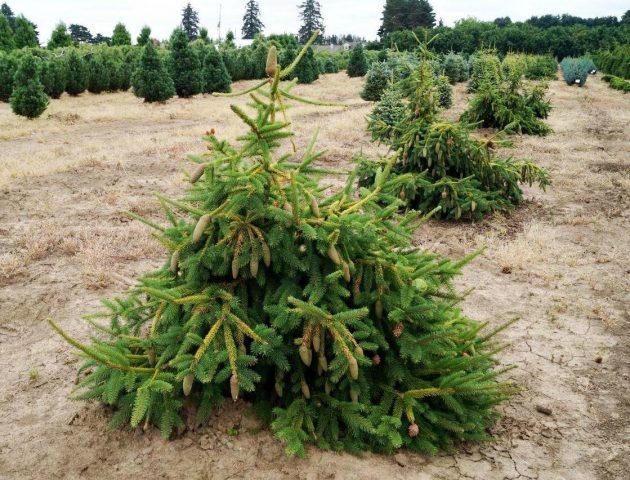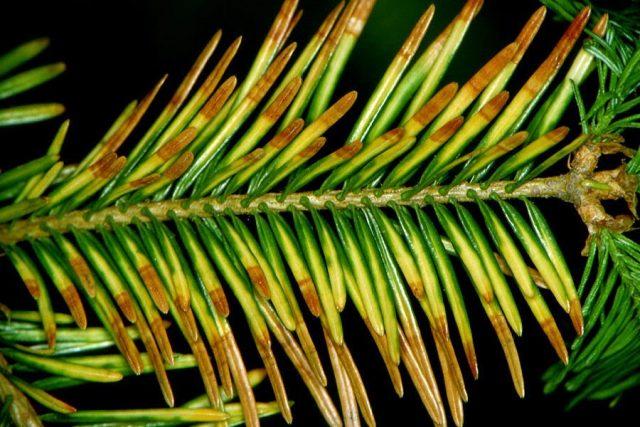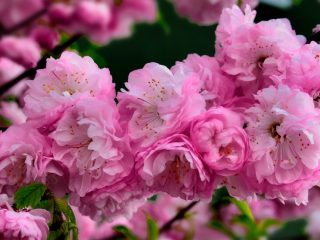Content
Spruce Push is a type of coniferous shrub that is quite in demand among landscape designers. This is a dwarf plant that has high decorative qualities and has earned the love of many gardeners. It requires minimal care, is not very susceptible to diseases, and decorates the area for several decades.

The creator dubbed the Push spruce the witch's broom
Origin story
Spruce Push is a relatively young crop, which was bred in 1975. Its creator was specialist Werder Pusch, who works at the arboretum of the University of Berlin. The variety was the result of a mutation of the Acrocona variety. It was formalized as a separate culture in 1987.
Description and photo of Push spruce
According to the description, Push spruce is an evergreen dwarf variety with unusual cones. As a rule, the crop is devoid of a leading shoot and is characterized by numerous chaotically located hanging branches, forming an asymmetrical and loose crown.The shoots of the culture are massive and strong, quite densely covered with prickly and hard tetrahedral needles, their size is up to 2 cm. The color of the needles is rich, green, but young specimens are much lighter than old ones.
Fruits on the crop begin to appear at an early age, in the spring, and in fairly large quantities. At first they appear as small round cones, their color is red. As they ripen, they take the shape of a spindle and change color to pink or purple; in the second half of summer they turn brown.

Already in the tenth year of life, the Push spruce acquires a hemispherical shape and becomes much denser
Dimensions and height
The miniature spruce of the Push variety grows very slowly and is capable of adding about 2, maximum 6 cm per year. By the age of ten, the crop usually grows to only 30 cm, and its crown grows in diameter by about 0.6 m. At 25 years of age, the bush reaches a height of about 80 cm, and with a diameter of 1 m or even more.

Push spruce grows better in width than in length
Places of growth
Since the Push spruce variety can hardly cope with heat and increased dry air, it prefers to grow most of all in temperate climates. It is allowed to plant it in areas in regions with harsh conditions and in the northern regions of Russia.
Advantages and disadvantages
Push is an interesting variety of evergreen conifer with a certain number of advantages and disadvantages.

Planting the Push spruce can be done even in winter
Advantages:
- highly decorative;
- strong immunity;
- unusual color of cones;
- ease of care;
- possibility of cultivation in northern latitudes.
Flaws:
- low drought resistance;
- slow growth;
- high cost of seedlings;
- complex reproduction.
Features of cultivation
In order for the Push spruce to develop well and not lose its attractiveness, it needs to be provided with high-quality conditions. The culture feels best in partial shade or in a sunny flowerbed, but with shading provided during the midday hours.
The soil must be acidic, or with a slightly acidic or neutral reaction, and consist of sand, turf and peat. Despite the fact that Push prefers moist soil, it requires drainage, since stagnant moisture leads to the death of the crop.
This spruce is not particularly demanding on soil fertility. Fertilize it a couple of times a year with organic matter. It is not recommended to use minerals as fertilizer. Before planting the seedling, peat, manure or compost should be added to the hole.
As for care, since the Push spruce is sensitive to drought, it needs to be watered regularly, especially in the hot season, using at least a bucket of water. Immediately after planting, the tree trunk circle should be mulched. It is also important to systematically remove weeds near the tree and loosen the soil.
From time to time, the Push spruce needs to be trimmed, at which time dry and damaged shoots and dead cones should be trimmed. In the spring, before the sap begins to flow, the bush is given a beautiful shape.
Push spruce is a frost-resistant crop that can withstand temperatures down to -40 ° C, so it does not need shelter for the winter. However, some gardeners, to be on the safe side, sprinkle the area around the spruce trunk with peat in the fall.

Spruce Push does not like hot weather and feels best in the cool.
Reproduction methods
Since Push is an ornamental spruce, it can only be propagated by cuttings or grafting. Moreover, the first method is quite complicated and requires special equipment, but the second is quite feasible, but also not simple.
Most often, gardeners propagate Push spruce by grafting, which allows them to preserve all its varietal characteristics. The procedure is carried out in early spring or summer, adhering to the following algorithm:
- A rootstock is selected, which is an ordinary spruce about 0.5 m high, approximately five years old.
- The scion is prepared - last year's shoots, 8-10 cm long, are cut from the upper tier of the tree near the side branches.
- Clean the trunk of the rootstock from shoots and needles, and the cuttings from needles, except those around the buds.
- An incision is made on the scion so that the bark forms a tongue from the bottom.
- The scion is tucked under the resulting formation and securely secured with a winding.
- The area around is covered with garden varnish.
- When the shoot begins to grow, the winding is unwound and wound weaker, and after 30 days it is removed completely.
Next, the grafted tree is provided with increased care. The branches of the rootstock are removed gradually. The first time this is done next spring: the top whorl is removed completely, the side whorls are shortened. The ends of the scion crown are cut off in the third year, and after another 12 months, part of the branches is cut out into a ring, and so on.

For large spruce trees, it is advisable to do several vaccinations at once to increase the chances of their survival.
Diseases and pests
Spruce of the Push variety has natural immunity to most diseases and pests, but if agricultural practices for growing the crop are violated, resistance to diseases weakens. Then she may get a fungal infection, or encounter pathologies common among conifers. Most often this is:
- Schutte. Brown stripes on the needles of a plant, which lead to a change in the color of the needles. To get rid of the disease, you will have to cut off all the affected branches and burn them.
After pruning a tree that has been subjected to shutter, it is treated with copper-containing compounds
- Fusarium. Spruce is transmitted from infected fruit crops. To get rid of it, the affected parts of the bush are removed, and the surviving crown and soil are sprayed with Fundazol.
The main symptom of fusarium is yellowing, drying and falling needles
- Rust. A disease during which the needles of the Push spruce become covered with orange spots with spores maturing inside. It develops rapidly and causes needles to fall off. You can cope with the disease only at the very beginning, which will require removing diseased branches and carrying out several treatments with copper-containing compounds at an interval of two weeks.
If you open up the rust fungi, it will affect the entire spruce
- Spruce aphid. An insect that sucks nutritious juices from pine needles. To defeat it, you need to treat the tree and the surrounding area with Aktara, Iskra or Aktellik, and also get rid of the ants that spread the parasite.
Folk remedies help a lot in the fight against spruce aphids
- Hermes.A pest that causes the needles of the Push spruce to become deformed and covered with a sticky white coating. They can only get rid of it with the help of insecticides.
Female Hermes actively reproduce and lay many larvae on the tree
El Push in landscape design
Push is a spruce with pink cones that fits very original into the landscape. Most often it is used as an effective decor in different versions:
- small Japanese garden;
- rock garden;
- heather garden;
- as a retaining wall.
This variety of spruce belongs to the group of plants whose cultivation is practiced on a trunk. This technology involves grafting a crop onto a smooth, branchless trunk for the purpose of artificially lengthening it. For Push, a standard is used, the height of which does not exceed 170 cm.
As for its neighbors, this spruce goes well with other representatives of conifers, as well as deciduous trees.

El Push is able to enliven a space, while taking up little space
Conclusion
Spruce Push is a miniature and quite interesting crop, which, if skillfully positioned, can decorate a landscape made in any style. This Christmas tree has extraordinary beauty and expressiveness; with minimal attention it can live for 50 years. The plant strikes with a special charm in the spring, when pink cones and bright young needles of a light green hue appear on it.
Reviews of dwarf spruce Push













